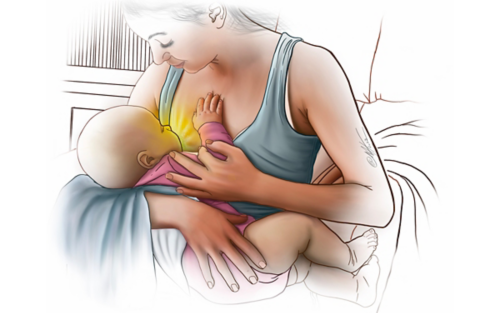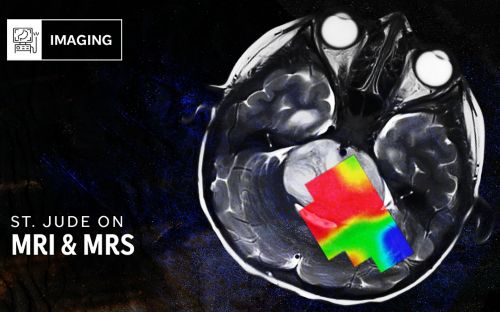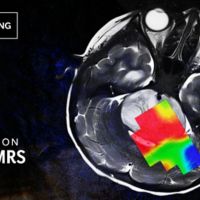Pulling the curtain back on the RSV window of vulnerability

The connection between mother and infant before and after birth provides vital immune support, but viruses like RSV are specialists in navigating this window
Before a baby is born, when the fetus is still developing in the womb, it is already being protected by its mother. Not just the physical protection of the uterus and amniotic sack — there is also immunological protection through passive immunity. This sharing of immunity resources gives the developing infant a chance to protect itself from pathogens right from the start.
Exposed to the outside world, babies in their first months of life must primarily rely on their mother’s passive immunity carried on from pregnancy as well as antibodies passed on through breastfeeding. This functions like an immunological boot camp. The baby’s developing immune cells are inexperienced and unfamiliar with what they will face. However, the mother’s immune cells have years of experience, functioning as drill sergeants to get the immune system ready for life outside the womb.
In the first months of life, a newborn will encounter bacteria and viruses that can cause illness. Some viruses can navigate past the existing and waning immunological protection from the mother, targeting newly born children before they develop a self-sufficient immune response — a window of vulnerability. The most prevalent of these is respiratory syncytial virus (RSV). RSV is the second most common cause of infant mortality globally after malaria and the number one cause of hospitalization in infants worldwide.
RSV is a perfect storm; it is an incredibly contagious virus with specific genes to block immune responses and is most harmful within the window of vulnerability of infancy. Already narrow airways become severely obstructed through mucus production and debris when infants develop bronchiolitis (the hallmark of RSV), and the immature immune system is ill-equipped to fend off infection.
It is within this window that researchers at St. Jude Children’s Research Hospital have planted their flag.
“If a two-month-old and a two-year-old are infected with the same virus, the two-month-old is much more likely to develop severe disease and potentially die,” explains Octavio Ramilo, MD, St. Jude Department of Infectious Diseases chair. “Not only that, if you give a vaccine to a two-month-old, it doesn’t respond as well [as an older child]. You need three or four doses until the immune system can generate an effective immune response. So, infants are more susceptible to, and experience, far more severe infections.”
Scoping out the RSV landscape
Ramilo arrived at St. Jude in early 2023 intending to paint the full picture of infant immune system development and response to infection. He is joined by his close collaborator Asunción Mejías, MD, PhD, MsCS. Mejías takes a complementary approach to Ramilo, using data-driven hypotheses to explore the interactive landscape of RSV immune responses and how other infections, such as SARS-CoV-2, affect the outcomes of RSV patients and vice-versa.
“We tend to think that the body is formed by separate compartments, but it’s not,” explained Mejías. “In the body, everything is connected.” Along those lines, she is also very interested in understanding the interactions between RSV and bacterial and viral pathogens in the respiratory tract. “The dogma was that in infants with RSV, bacterial pathogens do not play a role in disease severity. Well, we are not so sure,” Mejias mentioned.
The scope of the task at hand is broad; RSV affects people worldwide and has seen a dramatic resurgence in recent years. It’s widely viewed that by the age of two, every child will have been exposed to the virus. Furthermore, a study run across Europe including 993 infants between July 2017 and April 2020 showed that almost 1 in every 50 infants in high-income settings were hospitalized with RSV during their first winter season.
While most of these cases are non-lethal, mortality rates, as is often the case with infectious diseases, soar in low- and middle-income countries (LMICs). Indeed, a call-to-action, published in March 2023 in The Lancet Global Health on behalf of the RSV Prevention Collaborators (which includes Ramilo and Mejías) laid out the true stakes and work yet to be done: 99% of RSV-associated deaths occur within LMICs.
When considering preventative treatments and vaccination, researchers must be mindful of this disparity between affected groups. Such disparities have been compounded by the ongoing threat of COVID-19 and influenza, which are both surging as we come out of pandemic-induced sheltering.
The past two years have been banner years for viruses, with the knock-on effect of a skipped winter infection season only now beginning to be grasped.
“When restrictions were lifted, respiratory viruses started to spread again, and everything happened at the same time, so [children] had one viral infection after the other,” Mejías explained. “Infants and young children didn’t have a chance to recover, as the immune system was trying to fight everything at once.”
Ramilo and Mejías firmly believe that the key to successful treatment and prevention worldwide is to be found in two philosophies: “Know thy enemy” and “know thy self.”
Know thy enemy: RSV
To find the path to comprehensive treatment and prevention, Ramilo understands the devil is in the details.
“We can’t just understand [RSV] at the surface level and produce vaccines that way,” Ramilo said, “We need to understand its basic mechanisms.” His emphasis on this comes from his belief in structure-based vaccine development, which he sees as “the new field in vaccinology.”
One such basic viral mechanism illuminated by structural studies is how viruses contact cells. This contact is the first step in infection and allows the virus to hijack cellular machinery for its own replicative benefits. The merging of cell and viral membranes occurs through the viral fusion (F) protein. However, the contact is transitory and hard to capture due to the innate instability of the F protein. Naturally, it is before this moment of contact, known as the prefusion state, where the richest information is held.
RSV researchers became storm chasers, seeking to capture the exact moment of a lightning strike — the transitory and fleeting moment that the protein exists in its prefusion state. This key breakthrough was achieved and published in Science in 2013, and with it came a flood of opportunities.
“That structure was very important because the prefusion protein is totally different than the postfusion state of the F protein,” Ramilo explained. “This opens up new antigenic sites that induce very potent neutralizing antibodies and allows us to design new antibodies and new vaccines.”
In the world of COVID research, this fusion protein equivalent is more commonly called the spike protein and has been the basis for much of COVID-19 vaccine development. Mejías agrees with her collaborator, insisting that the F protein prefusion structure “has been critical and changed the field of RSV and COVID.”
Know thy self: Immunity
The structural studies already allow scientists to design more effective vaccines. Still, an in-depth understanding of our immune system and how it develops and responds to infection is equally critical, according to Ramilo and Mejías.
“There’s so much that we don’t know,” Ramilo said. “At St. Jude in 2010, they began to sequence pediatric cancer genomes. We must do the same for early-life immune cells to understand what’s happening.”
Two of the main responses of immune cells to viral infection include interferons and antibodies. Interferons act as the SOS signal of infected cells to notify the body of infection. They are a part of the body’s innate immune system and function the same for almost any viral infection, inhibiting viral replication and activating immune cells. Antibodies represent the arsenal with which the immune cells fight off infection. They are the adaptive part of the immune system, designed to be specific to each invader. The more viruses our immune system encounters, the larger the arsenal.
As Ramilo and Mejías found in their 2019 Journal of Infectious Diseases paper, there was an interesting correlation between immune response, disease severity and viral load, or the amount of virus found in an infant’s upper respiratory tract.
“We found that having a higher viral load at the beginning [of infection] somehow induced a stronger interferon response, and the outcomes were better,” Mejías elaborated
This seemed counterintuitive, as you would expect that a greater amount of virus would mean worse outcomes. Mejías suspects this has a lot to do with interferons and other components of the immune response.
“In the immunocompromised population, especially those with T-cell deficiencies, we know that viral clearance is impaired and even associated with mortality. The inadequate function of the immune response is really associated with worse outcomes.”
These findings show how tricky RSV is to combat. It is highly transmissible but hospitalizes only the most vulnerable while leaving most of the population with little more than a cold. Ramilo, Mejías and others in the field are evaluating current and future vaccination plans to see what the optimal strategy is to combat this nuanced virus.
Passive immunization through maternal vaccination is being examined as the most promising route. The most recent vaccine received its blessing and recommendations in October 2023 from the Advisory Committee on Immunization Practices of the Centers for Disease Control and Prevention (CDC), specifically for pregnant people during weeks 32 through 36 of pregnancy.
“Passive immunization through maternal vaccination is opening up a completely new way of thinking,” Ramilo explained.
Giving RSV the jab
The researchers are aware of the practical realities of improving RSV protection, with much still to learn regarding passive immunity and protection of both mother and baby.

An infant’s immune system is still under development after birth, meaning that passive immunity – the passing over of antibodies – provides protection from illness. Continuing passive immunity through breast milk, or alternative feeding options allows for this protection to continue until adaptive immunity is developed. Artwork by Malcolm Houston.
“How many vaccines can you give expectant mothers until they push back?” Ramilo questioned. “The maternal placenta is also very important — there’s a limit to how much antibody (or antibodies against different pathogens) can cross the placenta. Breastfeeding, too, is very important [in this context] to provide antibodies to young infants”.
Nirsevimab, a direct shot of antibodies rather than a vaccine, is being offered for babies if mothers did not receive the vaccine. This measure also received the blessing from the CDC in August 2023.
“These strategies will change how we manage RSV in young infants,” added Mejias. This is akin to the adage of giving someone a fish vs teaching them to fish, but in lieu of a fully developed immune system, supplying antibodies for a short time can be the difference between life and death.
While scientists and clinicians look to these vaccinations and shots currently available to stem the tide of RSV this season, researchers are keeping a watchful eye on success and moving forward to improve on technologies. Ramilo emphasizes the importance of understanding the virus and immunity fundamentally.
“We need to sequence RSV,” he said. “We need to monitor RSV. We need to know, with these new vaccines and antibody shots, if a resistant barrier will emerge.”
Driving forces in addressing RSV
In this endeavor, Ramilo and Mejías are leading the charge.
“With RSV, the truth is that there are not a lot of studies looking at the sequence of the virus,” Mejías explained. “Here [at St. Jude], we are developing a very big collaborative initiative to do that, to sequence RSV to be able to monitor if it changes and the clinical consequences of those possible changes when and if they arise.”
One ambition of the pair is to monitor the virus from pregnancy into infancy and through immune events throughout this period.
“There’s a lot of evidence from history that what happens in these first two years of life have long-term implications for health,” Ramilo explained. “[To understand this], we need to go to a higher level of detail and depth.” This future birth cohort will go a long way to addressing these gaps in knowledge.
Currently, the two are also exploring the link between RSV and COVID-19 outcomes. Viruses do not exist in a vacuum, and how our body responds to infection can often depend on the order in which we were exposed to the viruses. This was shown in their 2022 report published in Pediatric Pulmonology,
“The group that by far had the worst clinical outcomes were children that have been infected with COVID and two to three weeks later with RSV,” Mejías explained.
Significantly, the effect is not as severe if the infection happens the other way around, demonstrating the pronounced differences in how our immune system responds to viruses.
“With RSV, there is a balance between interferon and inflammation,” Mejías expanded. “With COVID, everything is up. There’s no balance.”
The research of Ramilo and Mejías plan will no doubt have a significant impact on our current understanding of immunology, virology and vaccinology. And while respiratory tract infections remain a threat to vulnerable groups such as infants, elderly and people with compromised immune systems, the approval of vaccines and shots for this RSV season is welcome news. This is the first season where such preventative measures are available for the three big respiratory viruses: RSV, COVID and influenza. With the charge of innovation and immunological understanding only speeding up, these viruses can one day be put to the sword once and for all.






